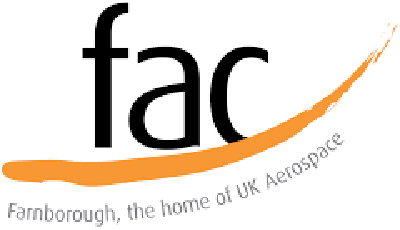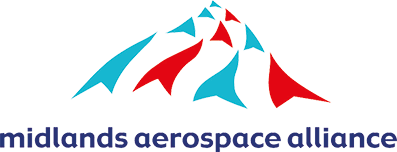Falls from Height: A Persistent and Predictable Risk in the Workplace
Following a recent prosecution involving British Airways, Claire Burrows, Partner, and Thorrun Govind, Solicitor at purpose-led independent law firm Brabners, discuss what happened, the legal outcome and why a proactive approach to health and safety compliance is essential for employers.
In a stark reminder of the consequences of inadequate safety measures, Southwark Crown Court has fined British Airways (BA) over £3.2 million following two serious incidents at Heathrow Airport. In both cases, baggage handlers sustained life-altering injuries after falling from height while performing routine duties. The prosecution, brought by the Health and Safety Executive (HSE), underscores the ongoing legal, operational, and reputational risks faced by employers who fail to protect their workforce in high-risk environments.
What Happened?
The incidents occurred in August 2022 and March 2023. In both cases, employees fell from mechanical platforms used to load and unload aircraft luggage. These platforms lacked guardrails or any form of fall protection. One worker fell 1.5 metres, sustaining a back injury and a head wound. The second fell 3 metres, suffering a brain haemorrhage and multiple facial fractures, which required extensive medical treatment and a prolonged recovery period. Although both individuals survived and have since returned to work in alternative roles, the long-term impact on their health and the operational disruption to BA were significant.
The Legal Outcome
British Airways admitted to two breaches of the Health and Safety at Work etc. Act 1974 (HSWA), specifically for failing to ensure the safety of employees working at height. Judge Finucane KC described the airline’s culpability as high, emphasising that both incidents were foreseeable and preventable. The court imposed a fine of £3,208,333, along with £20,935 in costs. Importantly, the sentencing reflected not only the actual harm caused but also the potential for serious injury or death. This approach is well established in health and safety law and the Sentencing Council’s guidelines (used by sentencing judges to determine the level of fine following a successful conviction) requires consideration of the likelihood and seriousness of harm risked, how far below the legal standard the organisation fell, and the organisation’s turnover.
The Legal Framework: Understanding the HSWA
The Health and Safety at Work Act 1974 is the foundation of occupational health and safety law in Great Britain. It applies universally to all businesses, regardless of size or industry, and requires employers to ensure, so far as is reasonably practicable, the health, safety, and welfare of their employees and others who may be affected by their operations. This includes contractors, visitors, and members of the public.
Employers are expected to carry out thorough risk assessments, implement effective preventative and protective measures, provide appropriate training and supervision, establish and maintain safe systems of work, and regularly monitor and review their safety procedures. Failure to meet these obligations can result in criminal prosecution, substantial financial penalties, and significant reputational damage.
Employees also have legal responsibilities under the HSWA. They are required to take reasonable care for their own health and safety, avoid actions or omissions that could endanger others, and cooperate with their employer to ensure compliance with safety laws.
In addition, Section 37 of the HSWA holds directors, managers, and other senior officers personally liable if a health and safety offence is committed with their consent, connivance, or due to their neglect. This provision ensures that health and safety is not merely an operational concern but a responsibility that must be taken seriously at the highest levels of leadership.
The Bigger Picture: Falls from Height in the UK
According to the HSE’s 2023/24 statistics, falls from height remain the leading cause of fatal injuries in the workplace. Of the 138 workplace fatalities recorded, 50 were due to falls from height. In the same period, 604,000 workers self-reported non-fatal injuries through the Labour Force Survey, while 61,663 non-fatal injuries were formally reported under RIDDOR. Of these, 8 percent involved falls from height, and 31 percent were the result of slips, trips, or falls on the same level.
These figures highlight that fall from height incidents are not only predictable but often entirely preventable. The HSE has consistently emphasised that the risks associated with working at height are well understood and provides an array of guidance and support to organisations to help manage this risk. Simple, cost-effective control measures such as installing guardrails, using harnesses, and providing proper training, can significantly reduce the likelihood of serious injury or death.
A Call for Proactive Safety Management
The British Airways case serves as a powerful reminder that organisations cannot afford for safety to be reactive, only seeking legal input after a breach has occurred. Employers must adopt a proactive approach to identifying, assessing and managing risks, particularly in high-risk sectors such as aviation, logistics, and construction. Regulatory enforcement is increasingly focused not just on actual harm, but on the risk of harm, especially where well-known risks are left unaddressed.
Now is the time for organisations to take a hard look at their safety systems, ensure full compliance with legal duties, and embrace best practice standards. The most effective strategies ensure that compliance is built in from the start. Seeking advice at the earliest opportunity can be an effective way to check the efficacy of your current health and safety frameworks and identify any red flags. Doing so not only protects employees but also safeguards the business from legal, financial, and reputational fallout.
Compliance should also be seen as a continuous process, rather than a one-off investment – especially as the sector continues to evolve.
Talk to Us
If your organisation needs guidance on assessing and addressing health and safety risks and liabilities, our experienced regulatory solicitors are here to help. Our team includes a former HSE prosecutor and specialist defence solicitors who provide practical training and advice, a rapid response incident management service in the event of a crisis, and full support for clients facing investigation or enforcement action from regulators. Through our Brabners Protect consultancy platform, we work alongside management teams to ensure that they have the tools, confidence and clarity they need to successfully implement and maintain robust health and safety management systems.
To learn more about our health and safety solutions, get in touch by emailing Claire.Burrows@brabners.com or Thorrun.Govind@brabners.com








